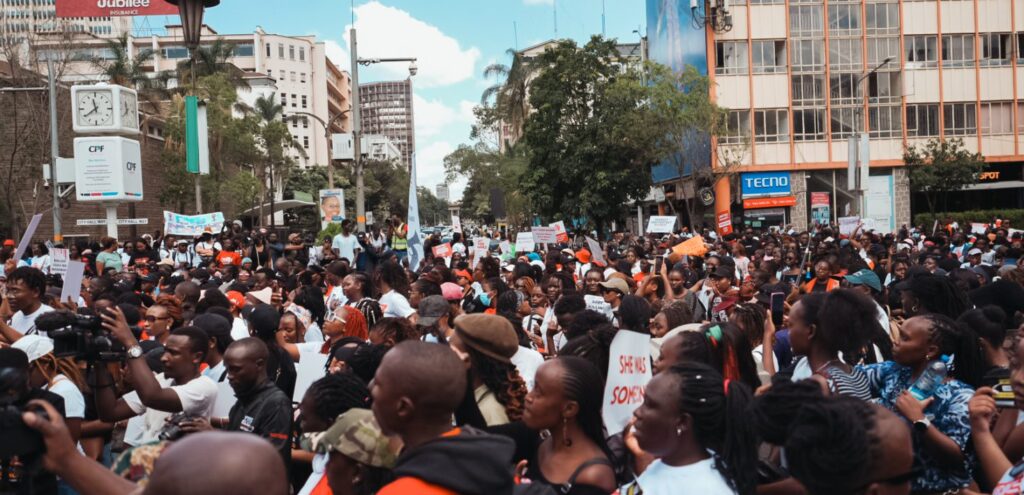- Kenya’s Political Instability has seen calls for President Ruto’s impeachment, a demand likely to persist soon.
- Reduced capital inflows suggest limited foreign exchange reserves at the central bank’s disposal to support the currency in the near term.
- The analysist say tensions will likely de-escalate in the coming weeks, but expect market sentiments towards Kenya to remain bearish
The Kenyan shilling is expected to face pressure in July due to anticipated declines in capital inflows caused by political instability experts have warned.
The analysist from pan African market insights firm Stears are now saying that following the protests from June 18 to June 27, the currency depreciated by 0.29 per cent slightly dimming economic outlook.
This downward trend is likely to continue amid uncertainties surrounding the President’s push to step down and an upcoming IMF review.
Reduced capital inflows suggest limited foreign exchange reserves at the central bank’s disposal to support the currency in the near term.
Similar to South Africa, the performance of the Kenyan shilling will also be influenced by the dollar, which is expected to remain strong in July as the US Federal Reserve maintains a hawkish stance before its rate cuts begin.
On a positive note, Kenya’s export earnings from tea and coffee, which account for 23.55 per cent of the country’s exports, have significantly increased. This trend is expected to continue in the second half of the year, provided there are no production constraints.
“However, shilling’s movements in July will ultimately depend on market sentiment regarding political developments, exchange rate expectations, and investor confidence. Stears forecasts the shilling to close Q3 2024 at Kes129.42 against the dollar.” Stears said in their monthly economic outlook update.
Impact of Demonstrations
The demonstrations were premised on the government cutting back its spending instead of increasing taxes. This public outcry follows the safe passage of the 2023 Finance Bill, which introduced a VAT hike of 16 per cent (from 8 per cent) on energy products and a housing levy of 2.5 per cent on gross pay.
Kenya is under the Extend Credit Facility (ECF) and Extended Fund Facility (EFF) IMF conditional loan program that require the government to cut back spending and improve government tax and export revenue.
According to the May 2024 budget implementation review, fiscal authorities have made considerable strides to achieve these loan objectives. The government targets a 16 per cent increase in income over expenditure in the 2024 fiscal year.
While these are commendable, the bulk of the austerity measures implemented due to these programs have meant a substantial squeeze on income levels, worsening the cost of living in Kenya.
Unfortunately, the hardest hit by these policy changes are the low-middle income earners, comprising over 70 per cent of Kenya’s total consumer market.
Read Also: Kenya’s Ruto retreats on tax bill after fiery protests, calls for youth dialogue
Kenya’s Political Instability
Despite the bill being withdrawn, Kenyans still call for Ruto’s impeachment, a demand likely to persist soon. Although the ongoing protests may soon de-escalate, public discontent remains high.
“Regardless of the outcome, we expect relatively positive investor sentiments toward the Kenyan economy to wane. Investors will adopt a wait-and-see approach before bringing in capital,” Stears said in their latest economic outlook.
Yields on Kenya’s sovereign dollar bonds declined to a five-month low, becoming one of the worst performing Emerging Market bonds since June 18, when the protests began.
“This indicates dwindling investor confidence. Additionally, we expect the protest and the government’s brutal response to feature in the IMF’s upcoming July review of the country’s economic outlook.”
The Fund’s expected pessimistic tone, forerun by this press statement, regarding the recent events, will further discourage investor sentiments.
Still, the IMF will be non-relenting on the conditions it has imposed on Kenya, as they are imperative for debt sustainability. President Ruto is stuck between a rock and a hard place to please Kenyans, and the multilateral lender and investors will keenly watch to see how it all unfolds.
The analysist say tensions will likely de-escalate in the coming weeks, but expect market sentiments towards Kenya to remain bearish, especially as Kenyans call for President Ruto to step down.
The unrest has worsened public discontent about the Ruto administration, raising security and safety concerns in Kenya that threaten near-term macroeconomic stability and the chances of a positive IMF review in July.
Read Also: Finance Bill: Kenyan MPs succumb to public pressure, drop inflicting taxes
